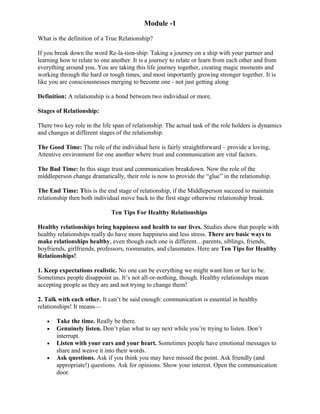The document discusses various topics related to interpersonal relationships including:
1. The definition of a true relationship and the stages of a relationship from good times to bad times to potential end times.
2. Ten tips for healthy relationships such as keeping expectations realistic, communicating effectively, being flexible, and fighting fair.
3. Additional tips for maintaining healthy relationships including speaking less and listening more, prioritizing harmony over being right, avoiding gossip, forgiveness, and developing a sense of oneness.






